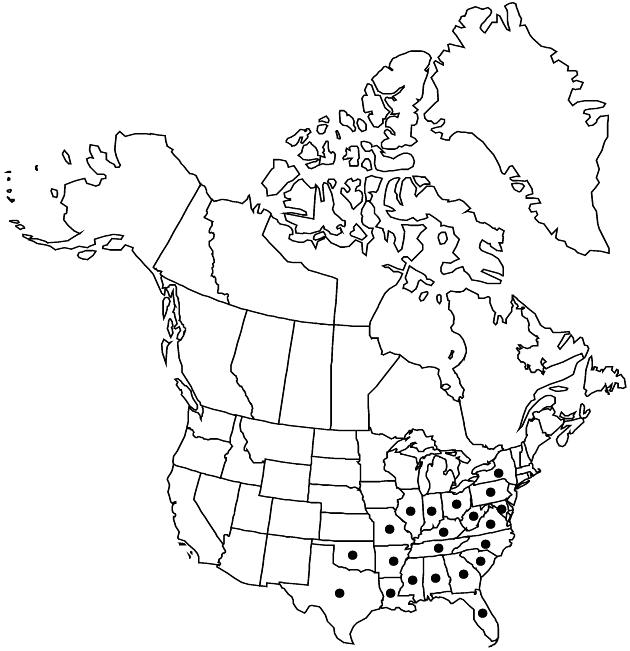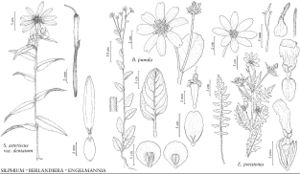Silphium asteriscus
Sp. Pl. 2: 920. 1753.
Plants caulescent, 30–200 cm; fibrous-rooted. Stems terete, glabrous, hirsute, hispid, or scabrous. Leaves: basal persistent or caducous, petiolate or sessile; cauline alternate, opposite, or whorled, petiolate or sessile; blades simple, lanceolate, falcate, or ovate, 1.5–25 × 0.5–5 cm, bases attenuate to round, margins dentate, serrate, or entire, apices acuminate, acute, or obtuse, faces glabrous, hirsute, hispid, or scabrous. Phyllaries 12–26 in 2–3 series, outer appressed or reflexed, apices acute to acuminate, abaxial faces hispid or scabrous. Ray-florets 8–21; corollas yellow. Disc-florets 35–150; corollas yellow. Cypselae 6–15 × 4–11 mm; pappi 0–5 mm.
Distribution

Ala., Ark., Fla., Ga., Ill., Ind., Ky., La., Md., Miss., Mo., N.C., N.Y., Ohio, Okla., Pa., S.C., Tenn., Tex., Va., W.Va.
Discussion
Varieties 5 (5 in the flora).
Selected References
None.
Lower Taxa
Key
| 1 | Leaf faces glabrous or sparsely hairy | > 2 |
| 1 | Leaf faces hirsute, hispid, or scabrous | > 3 |
| 2 | Cauline leaves mostly whorled (in 3s) | Silphium asteriscus var. trifoliatum |
| 2 | Cauline leaves mostly opposite | Silphium asteriscus var. latifolium |
| 3 | Basal leaves persistent | Silphium asteriscus var. simpsonii |
| 3 | Basal leaves caducous. | > 4 |
| 4 | Paleae puberulent and stipitate-glandular | Silphium asteriscus var. dentatum |
| 4 | Paleae puberulent to scabrous (not glandular) | Silphium asteriscus var. asteriscus |
"broader" is not a number.
